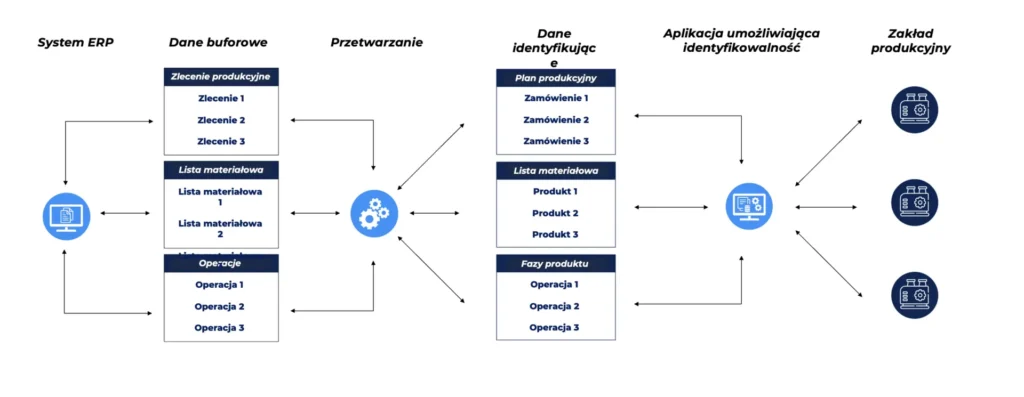What is production scheduling, and why is it important?
Production scheduling involves organizing, coordinating, and sequencing tasks to maximize efficiency and ensure on-time delivery of orders. Effective management of this process enables optimal use of resources such as materials, machinery, and human labor. This, in turn, enhances quality, productivity, and competitiveness. Additionally, production scheduling serves as the foundation for advancing more sophisticated digital transformation processes.
Proper scheduling minimizes machine changeover times and reduces downtime. A strategic approach allows companies to respond quickly to changing market demands. In today’s article, we’ll explore how to implement automated production scheduling and the benefits it offers.
Objectives of production scheduling
- Minimize downtime: Reduce machine idle time through precise task sequencing.
- Optimize resource utilization: Efficiently manage materials, machines, and workforce to limit waste.
- Adapt to market demand: Flexibly adjust schedules to accommodate customer orders, seasonality, and sudden changes.
- Boost productivity: Improve efficiency through better process workflows and time management.
- Streamline order management: Monitor data and progress in real time.
Manual vs. automated methods for production order scheduling
Traditional manual scheduling
Manual scheduling relies on employees collecting data, analyzing it, and manually preparing schedules. While relatively straightforward, this method is time-consuming and prone to human error. It also demands advanced knowledge of the production process and frequent data updates, which can lead to inaccuracies and mistakes.
Automated production scheduling
Automated scheduling leverages the integration of ERP (Enterprise Resource Planning) and MES (Manufacturing Execution Systems). ERP systems manage information on raw materials, components, and production orders, while MES systems oversee production execution and real-time progress monitoring.
A key tool in automated scheduling is the Gantt chart, which visualizes the production order schedule along a timeline. This tool supports effective process management and accommodates various production scenarios.
By integrating ERP and MES systems, companies can achieve efficient synchronization, faster task execution, and a reduction in errors associated with manual management.

ERP and MES integration
Integrating ERP and MES systems enables bidirectional data flow. ERP provides information on material requirements and order schedules, while MES monitors the production process, delivering detailed insights on component usage, order progress, and output results.
Once production is completed, MES updates ERP with data on inventory levels, material consumption, and finished goods. This approach allows for real-time process control and improved resource management.
Tools for automated production scheduling
- Gantt charts: Visual representations of task schedules on a timeline, aiding in priority management.
- Production scenarios: Modeling alternative solutions and selecting the best approach based on changing variables.
- Key performance indicators (KPIs): Monitoring task completion times, machine efficiency, and material usage.
Contact us
Do you want to move your production plant to level 4.0? Are you interested in modern solutions for industry in the field of automation and digitisation? Be sure to let us know!
Benefits of automating production scheduling
- Reduced scheduling time: Eliminate manual tasks to speed up planning.
- Improved time management: Precisely prioritize production tasks.
- Decreased downtime: Plan machine maintenance efficiently.
- Optimized inventory management: Minimize overstock and shortages.
- Enhanced flexibility: Respond quickly to changes.
Monitoring plans and analyzing KPIs
Key performance indicators
- Order completion time: Track punctuality.
- OEE (Overall Equipment Effectiveness): Evaluate machine performance.
- Material usage: Monitor consumption levels.
- Productivity rates: Measure output per time unit.
Regular analysis of these KPIs helps identify areas for improvement and implement necessary adjustments.
Case study – The success of automation in scheduling

A mid-sized manufacturing company that previously relied on manual scheduling faced challenges with human errors and delayed responses to disruptions. By implementing an integrated ERP and MES-based automated scheduling system, the company achieved:
- 30% reduction in scheduling time
- 20% decrease in downtime
- 15% increase in OEE
This transformation also improved interdepartmental communication and accelerated decision-making.
Optimal production scheduling is critical for the smooth operation of any manufacturing business. Modern tools and automation significantly boost efficiency and reduce costs. By investing in systems that support scheduling and order management, companies can gain a competitive edge and ensure sustainable growth.
Adopting advanced production planning approaches is a step toward lasting improvements in financial performance and customer satisfaction.
Want to enhance production scheduling in your business?
Do you have questions or wish to learn more about optimizing production processes?
Contact us today!


